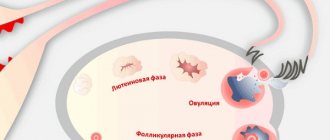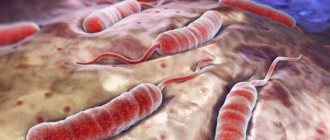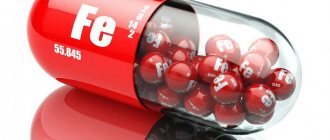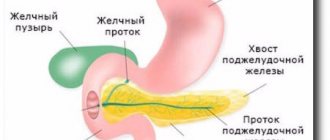Inflammation of the tendons, tendinitis, is considered a pathology that requires complex treatment. However, incorrectly provided assistance for such a condition threatens further injury not only to the tendon, but also to the tissues around it. There are about 700 muscles in the human body, which move both the smallest bones of the ear and the largest bones of the hip and pelvis. The muscle corset is attached to the bones by means of special connective tissue fibers - tendons. The latter have high strength but low elongation. It is this fact that contributes to the frequent injury of tendon cords.
What is tendinitis?
What is tendinitis? This is degeneration and inflammation of the tendon. It is often a concomitant disease of other serious diseases of the body. It is more common in men (1.5% more often) than in women due to the type of activity of many representatives. Various injuries and heavy loads cause tendinitis.
Other names for tendinitis include tendinopathy, tendinosis, and enthesopathy to refer to inflammation of the tendon that attaches directly to the bone.
go to top
Classification
Tendinitis has its own complex classification, which should be designated:
By mechanism of origin:
- Primary – develops as an independent disease.
- Secondary – against the background of serious diseases of the body.
By localization of inflammation:
- Knee joint (“heavy knee”);
- Shoulder joint (this includes biceps tendonitis);
- Elbow joint (“tennis elbow”, lateral, “external epicondylitis”, medial);
- Achilles tendon (Achilles bursitis);
- Hip joint;
- Wrists;
- Feet;
- De Quervain's disease is an inflammation of tenosynovitis of a stenotic nature of the thumb;
- Gluteal muscles;
- Temporal tendinitis;
- Neck tendinitis;
- Tibialis posterior (post-tibial).
By form:
- Acute - occurs sharply and brightly, suddenly limiting movement and causing pain. It can be aseptic or purulent.
- Chronic - develops with constant stress on torn tendons. It can be fibrous and ossifying.
Due to the occurrence:
- Autoimmune;
- Traumatic;
- Infectious (bacterial, viral);
- Parasitic.
Based on the inflammatory exudate, the following types are distinguished:
- Serous;
- Purulent;
- Calcifying (calcifying) – deposition of salts.
A sprain should be distinguished from a tendon rupture. A sprain is a rupture of several fibers at the same time, during which a repair process occurs. With tendinitis, there is a permanent rupture of tendon tissue.
It often occurs together with diseases such as tenosynovitis (tenosynovitis), in which the tendon sheath becomes inflamed, tenobursitis, in which the tendon bursa becomes inflamed, and myotendinitis, when the muscles adjacent to the tendon become inflamed.
go to top
Diagnostics
In diagnosing tendonitis, the ability to distinguish it from arthritis and other diseases is of primary importance. A specific sign of arthritis is constant pain throughout the entire joint. With tendonitis, pain is concentrated in a specific area and appears only during physical activity.
However, tendon inflammation does not have any specific signs by which it can be distinguished from other diseases of the joints and surrounding tissues.
Using hardware examination techniques, it is possible to detect only some signs inherent in inflammation, so differential diagnosis is sometimes required to establish a diagnosis:
- Medical examination. An experienced specialist will detect asymmetry and swelling in the tendon area, determine the boundaries of the affected tissues, the nature and location of pain and restrictions in joint movement.
- Laboratory research. The test results will be informative only if the presence of infectious processes of a bacterial nature or rheumatic diseases is detected in the body.
- Radiography. If the above symptoms are detected during examination of the patient, an x-ray is prescribed. This method helps to exclude a fracture and detect salt deposits in calcific advanced tendinitis. Inflammation of the Achilles tendon leads to the formation of heel spurs, as well as necrotization of an aseptic nature due to inflammation of the patellar ligament.
- MRI and computed tomography are performed to exclude the fact of tendon rupture and areas of degenerative changes. Such conditions require surgical treatment.
- Ultrasound examination is used as an auxiliary diagnostic method. In case of tendonitis, ultrasound can reveal abnormalities in the structure of the tendon and its ability to contract normally.
- Orthopedic tests. A number of tests are quite informative for a certain joint exposure. Inflammation of the shoulder joint can be confirmed by injecting a short-acting anesthetic into the site of inflammation. The diagnostic sign is the cessation of pain. If you suspect inflammation of the ligaments, you should contact a therapist and orthopedist.
Causes of tendinitis
There are many reasons for tendon tendinitis to develop. As an independent disease, it develops for the following reasons:
- Mechanical injuries occur with prolonged physical stress on the tendon.
- Physical activity on a specific muscle group causes the tendons to tighten. If the load occurs suddenly, this can lead to microtrauma.
- Inflammatory processes of a local nature: wounds, cracks, cuts, burns, etc., which become inflamed and allow infection to penetrate inside.
Here you cannot do without factors such as:
- Infection: gonorrhea, streptococci, chlamydia, borreliosis, viruses, fungi, etc.
- Rheumatic diseases: psoriatic, rheumatoid or reactive arthritis, osteoarthritis, scleroderma, lupus erythematosus.
- Immune system disorders: colds, bone marrow transplant, long-term use of hormonal or antibacterial drugs, chemotherapy, radiotherapy, blood and hematopoiesis diseases.
- Pathologies in metabolism - mainly gout, which makes the disease more masculine than feminine.
- Joint degeneration: hormonal disorders, excessive stress on the joint, injuries, impaired nutrition and metabolic processes in the joint capsule.
- Poor posture.
Factors such as muscle training, warming up of ligaments, the amount of load on the tendons, and the intensity of these loads become important. Repeated movements over a long period of time also cause tendinitis.
Don’t forget about age, which indicates the general condition of the body. It is also possible that there is a genetic pathology in the structure of the joint, which will cause various diseases, for example, bursitis.
go to top
How to diagnose?
Often, diagnosing tendonitis comes down to a survey (clarification of the nature and circumstances of the occurrence of the lesion) and examination. All additional research methods are aimed at excluding possible concomitant pathology (or the underlying cause in the case of trauma or systemic diseases).
Thus, in order to visualize the tendons, ultrasound diagnostics are performed. It is possible to use X-rays or computed tomography to exclude joint or bone pathologies. In rare cases, magnetic resonance imaging is used to detect possible microtraumas of the tendons.
If infectious or systemic diseases are suspected, appropriate studies may be carried out (rheumatic tests, urate concentration in the blood, etc.).
Symptoms and signs of tendon inflammation
Signs and symptoms of tendon inflammation usually have a local form, that is, they appear in the place where the inflammation has developed:
- Pain that rarely radiates to other areas and intensifies when trying to move the inflamed joint.
- Difficulty in movement accompanied by swelling of the joint.
- Redness of the skin.
- Nodules under the skin.
- Crunching when moving.
- Local increase in skin temperature.
- Swelling of the skin.
In addition, symptoms of the disease that provoked tendonitis may be observed, for example, symptoms of rheumatic diseases (shortness of breath, deformation of fingers, joint pain, cardiac changes, blueness), gout (formation of tophi or gouty nodes) or infectious diseases:
- cough, red throat, nasal congestion;
- moderate temperature, headaches, poor appetite;
- pain when urinating (cystitis), itching in the genital area, mucopurulent discharge from the urethra.
go to top
Complications
In general, severe complications from tendinitis are rare. The degenerative condition causes changes in the structure of the tendon and greatly increases the risk of tissue rupture.
Typical complications are considered to be:
- pain on palpation of the tendon;
- pain when stretching muscles;
- pain during movement that occurs when the muscles associated with the tendon are tense;
- addition of purulent infection;
- tenosynovitis, which provokes chronic fibrosis;
- weather sensitivity (pain occurs when weather conditions change, rain, fog and changes in atmospheric pressure).
A timely visit to the doctor can prevent the occurrence of complications.
Tendinitis in adults
Often in adults, tendonitis develops due to injuries, chronic diseases and metabolic disorders, and monotonous long-term loads. In men, it occurs more often due to physical work and sports activities. In women, it occurs due to stress during pregnancy, in sports or when wearing high heels.
Tendinitis is a disease of old people, since it is at this age that various pathologies, chronic diseases and loss of muscle tone begin to appear in men and women.
go to top
Treatment
Treatment for tendonitis is prescribed depending on the cause of its development. If it was caused by a traumatic factor, then the patient is treated at home with preliminary treatment in the hospital. If the disease is a consequence of another disease, then inpatient treatment is possible in order to fully control the healing process.
How to treat tendonitis? The following measures are used here:
- The diseased joint is partially immobilized by applying a bandage or bandaging. Temporary crutches may be needed to relieve pressure on the sore area. Avoid physical activity and sports for a while.
- Cold compresses are used in case of injury.
- Anti-inflammatory medications are taken.
- Physiotherapeutic treatment is carried out.
What anti-inflammatory drugs are used to treat tendon inflammation?
- Piroxicam;
- Indomethacin;
- Ketoprofen;
- Ibuprofen;
- Voltaren;
- Diclofenac;
- Viprosal;
- Dolobene.
What physiotherapeutic methods eliminate tendinitis?
- Laser therapy;
- Cryotherapy;
- Magnetic therapy;
- Ultraviolet irradiation;
- Electrophoresis with lidase;
- Phonophoresis;
- Therapeutic massage, which is performed only by a specialist;
- Extracorporeal UV therapy;
- Therapeutic gymnastics is carried out only as recovery progresses.
At home, you can massage the sore joint, but only by stroking, without any pressure or rubbing. The following folk remedies will also help relieve symptoms:
- Grated potatoes are ground together with onions, clay is added in the same amount and applied to the sore spot overnight.
- Mash 2-3 cloves of garlic, add boiled water (50 ml) and leave for several hours. Soak gauze and a terry towel in the solution, apply it cold to the sore spot, hold until it warms up to body temperature.
- Apple or wine vinegar (0.5 l) is diluted with vodka (100 ml), lemon juice (half a fruit) is added. Leave for up to 5 hours and use as compresses.
Traditional methods do not help if tendonitis is a consequence of another disease. They help only with injuries that caused this disease. As for diet, there is none here. You can eat more fruits and vegetables (especially turmeric, walnuts, ginger) to fill the body with vitamins.
In addition to the above, you should not forget about diseases that provoke tendinitis or can become its complication. How to prevent this? With the help of medications:
- Antibiotics;
- Anti-inflammatory corticosteroid medications;
- Colchicine;
- Locally irritating ointments;
- Painkillers;
- Glucocorticoid injections.
Surgical intervention occurs in the following cases:
- Pus has accumulated in the affected area. In this case, the tendon will be opened lengthwise and the pus will be removed. Treated with antibacterial drugs.
- There is significant tearing of the tendon. In this case, there is a surgical connection of collagen bundles that have ruptured. At the end, a plaster cast is applied for up to a month or longer.
- Tendon stenosis
- Degenerative changes in tendons.
- Osgood-Schlatter disease develops. In case of degeneration, the inflamed area is excised.
go to top
Life forecast
If tendonitis is treated, then it will not complicate a person’s life. How long do patients live? A full life. The duration of the disease is not affected, but can significantly worsen the prognosis of life if left untreated. Inflammation of adjacent areas, such as bursitis, myotendinitis or arthritis, may develop. This will not kill, but will worsen the condition of the patient, who may become disabled.
Prevent the disease, then tendonitis will not hurt you:
- Warm up your muscles before training.
- Exercise moderate amounts of stress on your muscles and tendons.
- Change the type of work from monotonous and monotonous to varied. Loads must alternately move to different parts of the body.
- Rest often, especially after physical activity.
- Eat a balanced diet so that your body has enough microelements and vitamins.
- Treat other chronic and infectious diseases of the body.
Prevention
The occurrence of tendonitis will be less likely if a person adheres to the following preventive measures:
- Exercise : Activities to strengthen the muscles around the tendon can help prevent tendonitis from recurring. It is important to seek professional help from a physiotherapist; he will prescribe a set of exercises.
- Stretching : Stretching is essential when playing sports. Proper stretching will prevent the development of tendonitis.
- Repetitive movements : These can significantly increase the risk of developing or continuing tendinitis.
It is also advisable not to stay in one position for too long, especially if you feel uncomfortable. It’s better not to be distracted for long, rest and return to work later.










